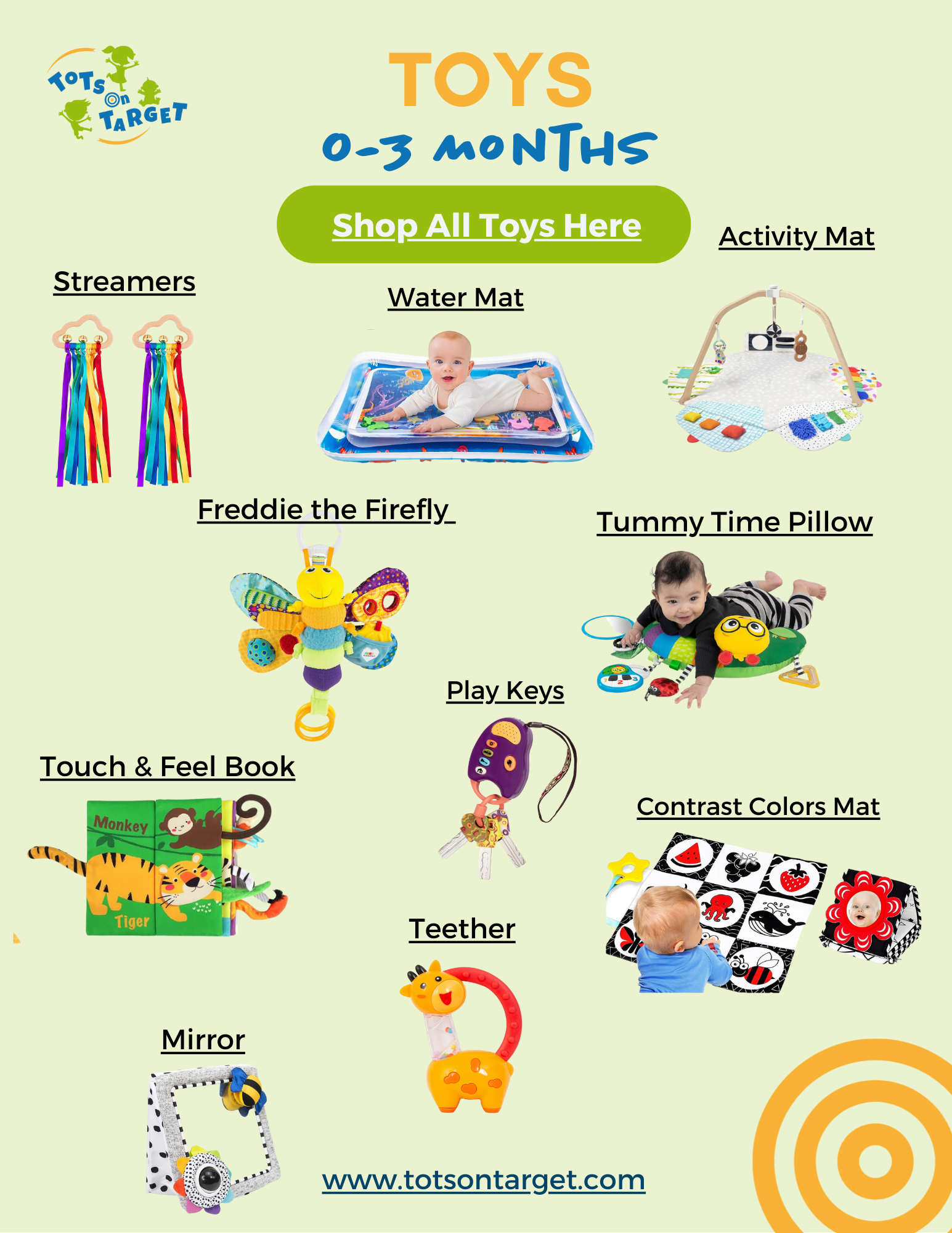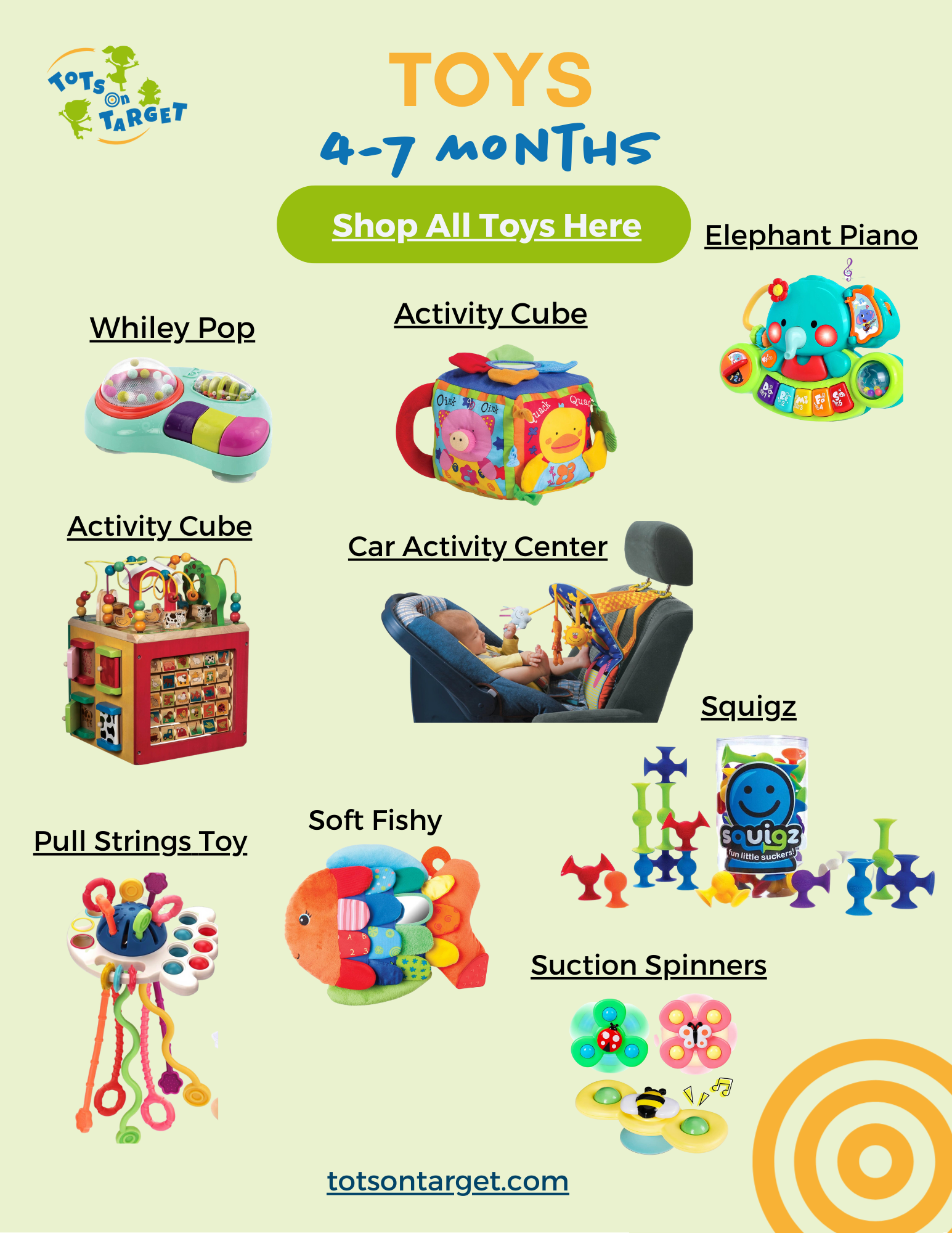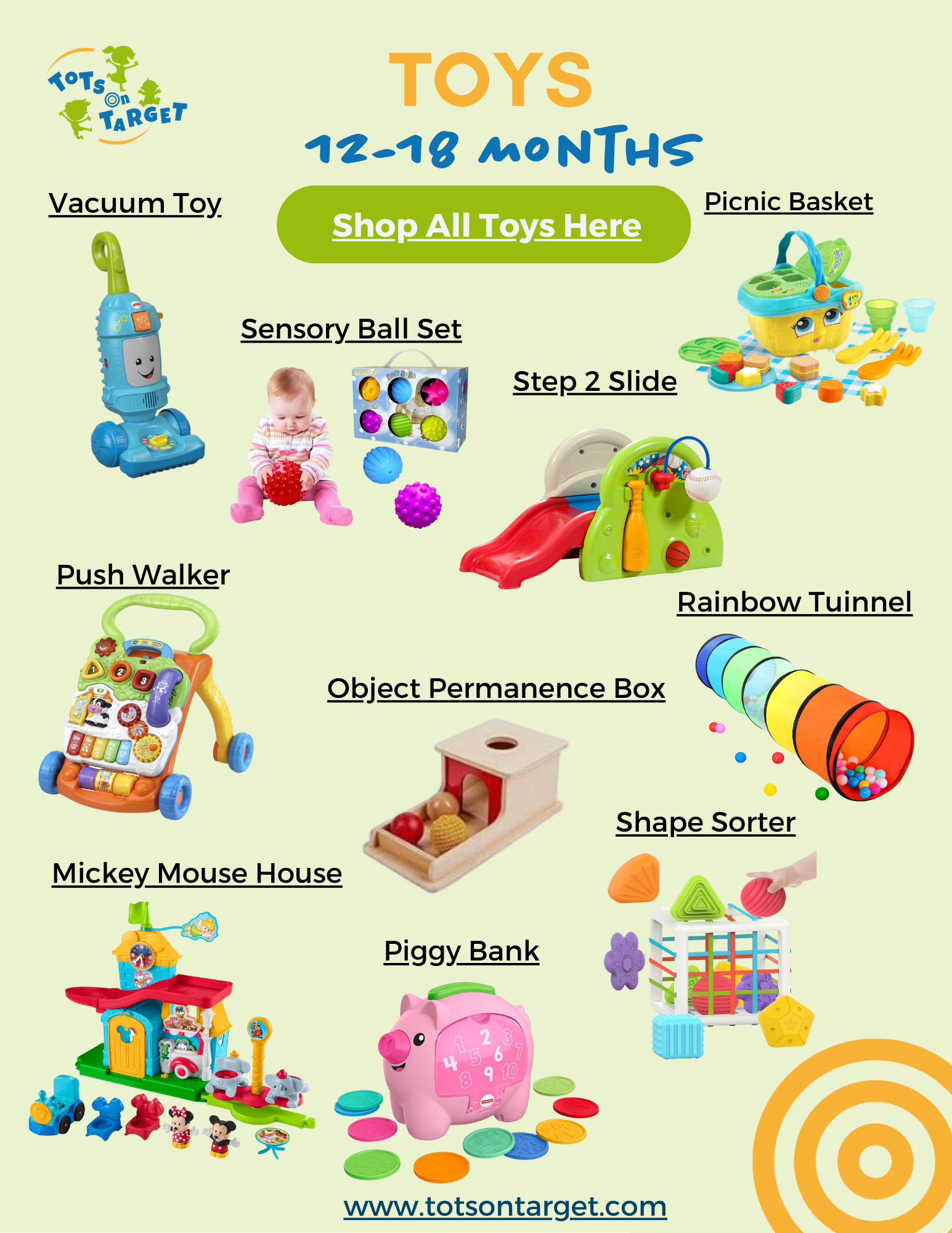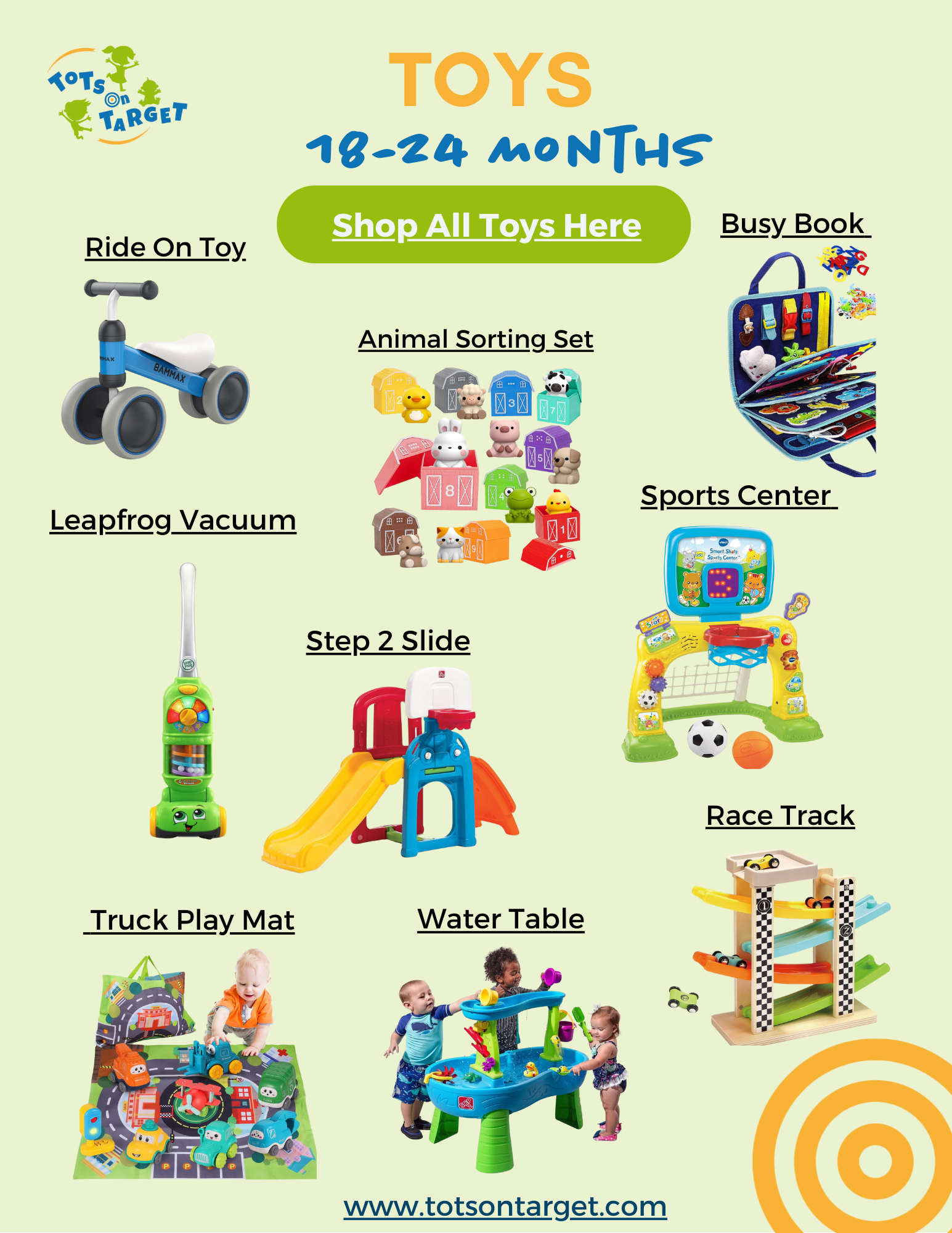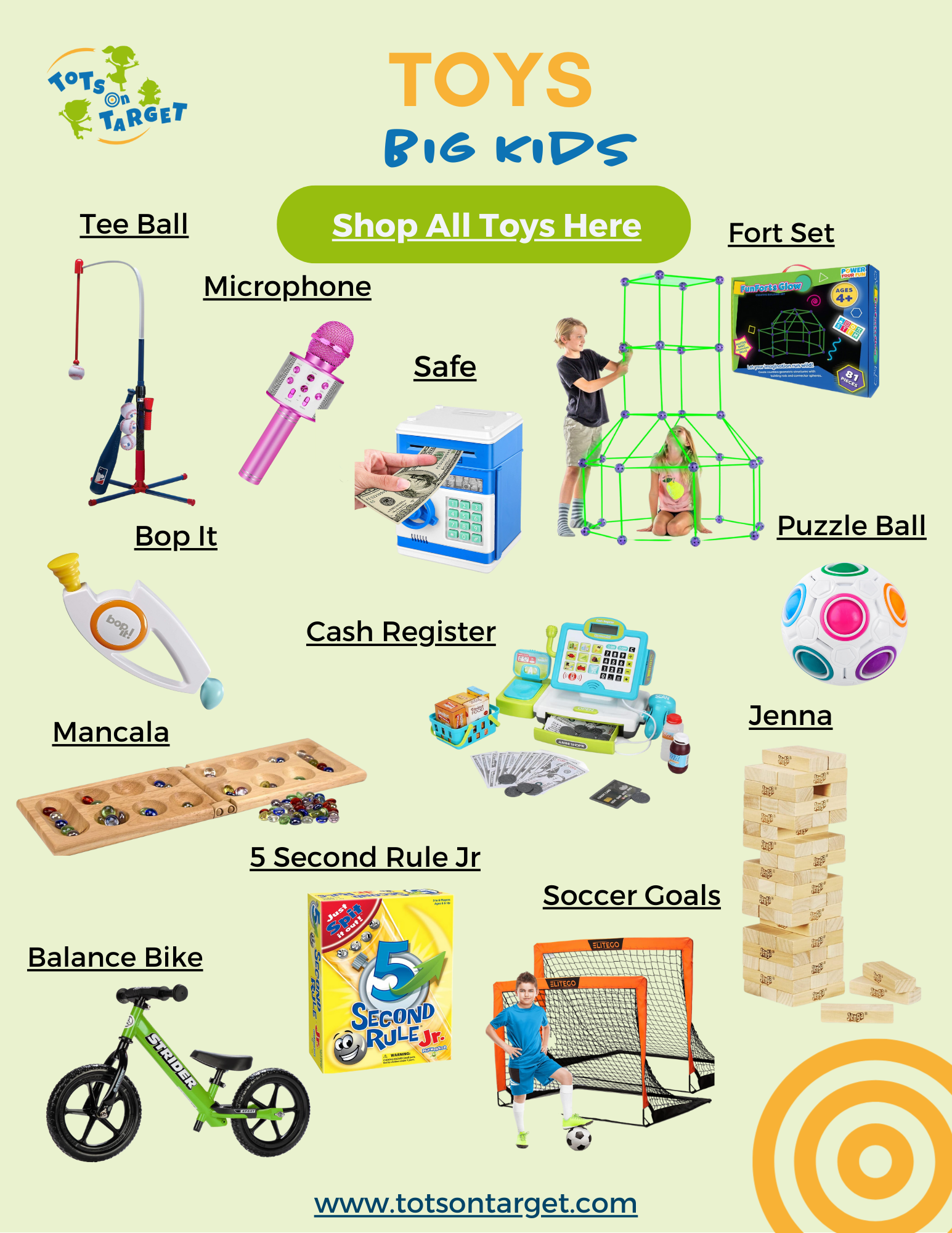The Tots on Target Toy Guide

Ever notice how your baby can spend forever mouthing a set of stacking cups, or how your toddler never gets tired of pushing that same dump truck across the floor? It may look like simple fun, but those moments are development at work.
As a mom, I love when toys hold my child's attention. As a pediatric PT, I know those toys are doing a lot more than keeping them busy. Stacking cups build coordination and problem-solving. Push toys challenge balance and strengthen little legs. A set of magnetic tiles for big kids? That’s imagination, fine motor skills, and engineering all rolled into one.
The truth is kids don’t need a room overflowing with toys to grow, learn, and thrive. What they need are a few well-chosen, open ended toys that hand the play back to them. Blocks that can be stacked and knocked over. Balls that can be rolled, tossed, and chased. Toys that invite them to move their bodies, think creatively, and take the lead.
Think of toys as invitations:
-
Gross motor toys encourage climbing, crawling, balancing, and running.
-
Fine motor toys strengthen little hands for writing, dressing, and independence.
-
Sensory-rich toys expand how children process textures, sounds, and movement.
-
Open-ended toys grow with your child- a set of blocks can be a tower at age 2, a castle at age 4, and a racetrack at age 6.
This guide will walk you through the best play picks for every stage, from newborns to big kids. It’s broken down by age group so you can see exactly which milestones your child is building right now, and how the right toys can support them. Think of it as a roadmap: from tummy time to team sports, each step along the way is a chance to grow through play.
0–3 Months: Foundations of Movement
Gross Motor: Babies are practicing head and neck control as they play on their tummies, backs, and sides. These early movements against gravity help build the foundation for rolling and later milestones.
- Fine Motor: Reflexive grasping gradually shifts into purposeful opening and closing of the hands, and babies begin to swipe at nearby toys.
- Sensory: High-contrast visuals and gentle sounds capture their attention, while tummy time provides important body awareness.
- Cognitive: Familiar voices and faces become recognizable, fostering trust and early social connection.
Click here for toys that support this stage:
4–7 Months: Building Stability and Control
- Gross Motor: Babies are progressing from propping on forearms to extended arms during this stage, playing with their feet, rolling both ways and learning to sit without support..
- Fine Motor: Babies start reaching with purpose, grasping, and manipulating objects with both hands together.
- Sensory: They explore textures with their hands and mouth, which supports oral-motor development and feeding. Rolling, pivoting in circles, and rocking on all fours provides vestibular and proprioceptive input.
- Cognitive: Cause-and-effect starts to develop.
Click here for toys that support this stage:
8–12 Months: Mobility and Exploration
- Gross Motor: Crawling, pulling to stand, and cruising along furniture emerge while building strength, coordination, and balance. Crawling on all fours is especially important for full body strengthening, cross-body coordination, vision development, and future reading skills.
- Fine Motor: Development of the pincer grasp (with the pads of their fingers, not the tips) allows babies to pick up small objects and become more independent with feeding.They bring toys together, wave bye-bye, and give high fives.
- Sensory: Loves music, and games that integrate vision, hearing, and touch. Crawling on all fours stimulates the proprioceptive sense (body awareness), crossing midline, bilateral coordination, hand-eye coordination, and depth perception.
- Cognitive: Babies enjoy playing peek-a-boo as they come to understand object-permanence.
Click here for toys that support this stage:
12–18 Months: First Steps and Independence
- Gross Motor: During this stage, babies become toddlers as they take their first steps, begin navigating stairs, and explore by climbing onto furniture.
- Fine Motor: Skills expand to stacking 2–3 blocks, holding a crayon with a full-hand grasp, and placing large coins into a slot with some assistance.
- Self-Help: Toddlers start holding utensils, drinking from a sippy cup, and helping with simple dressing tasks.
- Play: They copy body and hand motions, enjoy games like pat-a-cake, and begin pretend play such as feeding a doll or pretending to cook.
Click here for toys that support this stage:
18–24 Months: Confidence in Movement
- Gross Motor: Toddlers are now running, climbing, and kicking balls. Their balance is improving, though they still need plenty of practice. They may begin riding on scooters, walking up and down stairs with support, and throwing a ball.
- Fine Motor: They can build towers of 4 - 6 blocks, scribble on paper, turn pages in a book, place rings on a cone, and use utensils with increasing accuracy.
- Self-Help: Toddlers start to stab food with a fork, help with undressing, and show the beginnings of safety awareness.
- Play: Turn-taking begins to develop, parallel play becomes more common, and pretend play grows more imaginative and engaging.
Click here for toys that support this stage:
2–4 Years: Refining Skills
- Gross Motor: Preschoolers are busy jumping with both feet, climbing playground equipment, balancing on one foot, scootering, and pedaling tricycles.
- Fine Motor: They draw simple shapes, color, string beads, and begin snipping and cutting with scissors, all of which prepare them for school readiness.
- Self-Help: Children at this stage dress with greater independence, use utensils more accurately, and continue working toward potty training.
- Play: Imaginative play expands, and children thrive on predictability and routine. They also begin to recognize colors, numbers, and letters, laying the foundation for early academic learning.
Click here for toys that support this stage:
4–6 Years: School Readiness
- Gross Motor: Advanced coordination develops with skills like skipping, bike riding, and tackling more complex playground challenges. These activities help build endurance, strength, and self-confidence.
- Fine Motor: Coloring becomes more detailed as children draw recognizable people, flowers, and houses. Pencil grasp continues to mature, and early letter formation begins to take shape.
- Self-Help: Children dress and undress independently, fasten large buttons, and begin helping with simple household chores.
- Play: Pretend play becomes more sophisticated as they understand the difference between fantasy and reality. They often talk to themselves during play, start to grasp the concept of time, and enjoy playing games like house and school.
Click here for toys that support this stage:
Big Kids (6+ Years): Strength and Strategy
- Gross Motor: Children continue to advance
- Fine Motor: Coloring advances as the child starts drawing people and objects like flowers and houses. The child’s pencil grasp continues to mature as does letter formation.
- Self Help: Child dresses and undresses independently and buttons large buttons independently. They also can begin helping with chores.
- Play: Strategic thinking, memory, and teamwork, essential for academics and friendships.
Click here for toys that support this stage:
Childhood is built through play, and the toys we provide can either enrich that process. By focusing on a few high-quality, open-ended options, you give your child the chance to move, create, and imagine in ways that matter most for their development. Whether it’s stacking blocks, scootering down the sidewalk, or role-playing a favorite story, every stage of play builds the skills they’ll carry into school and life. Remember, you don’t need shelves overflowing with toys. What makes the biggest impact are thoughtful choices that spark curiosity, challenge the body and brain, and grow with your child year after year.

